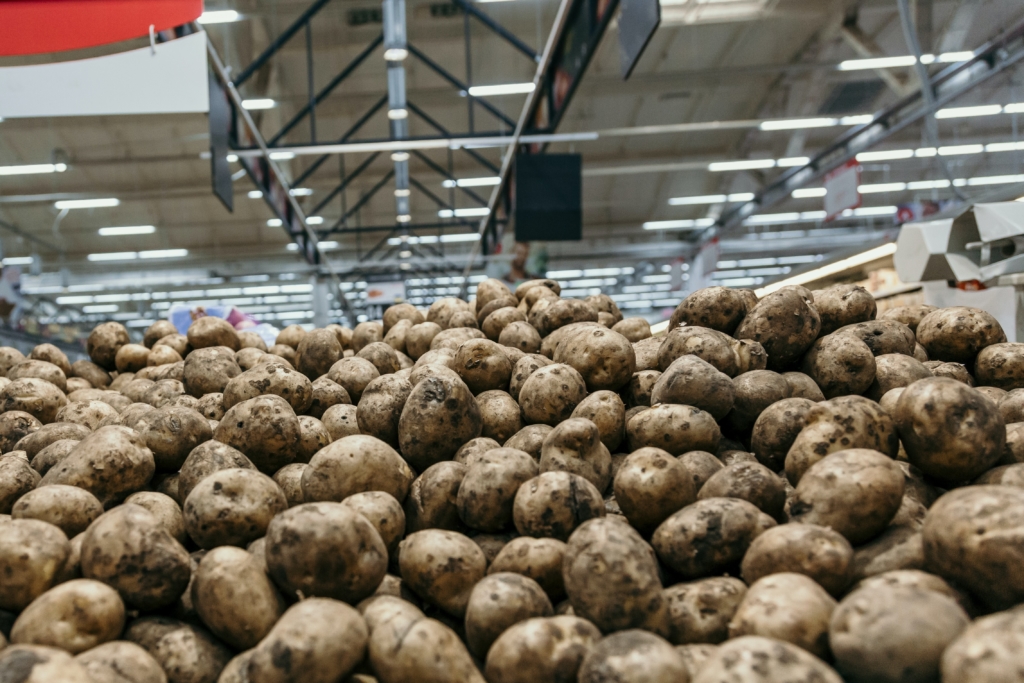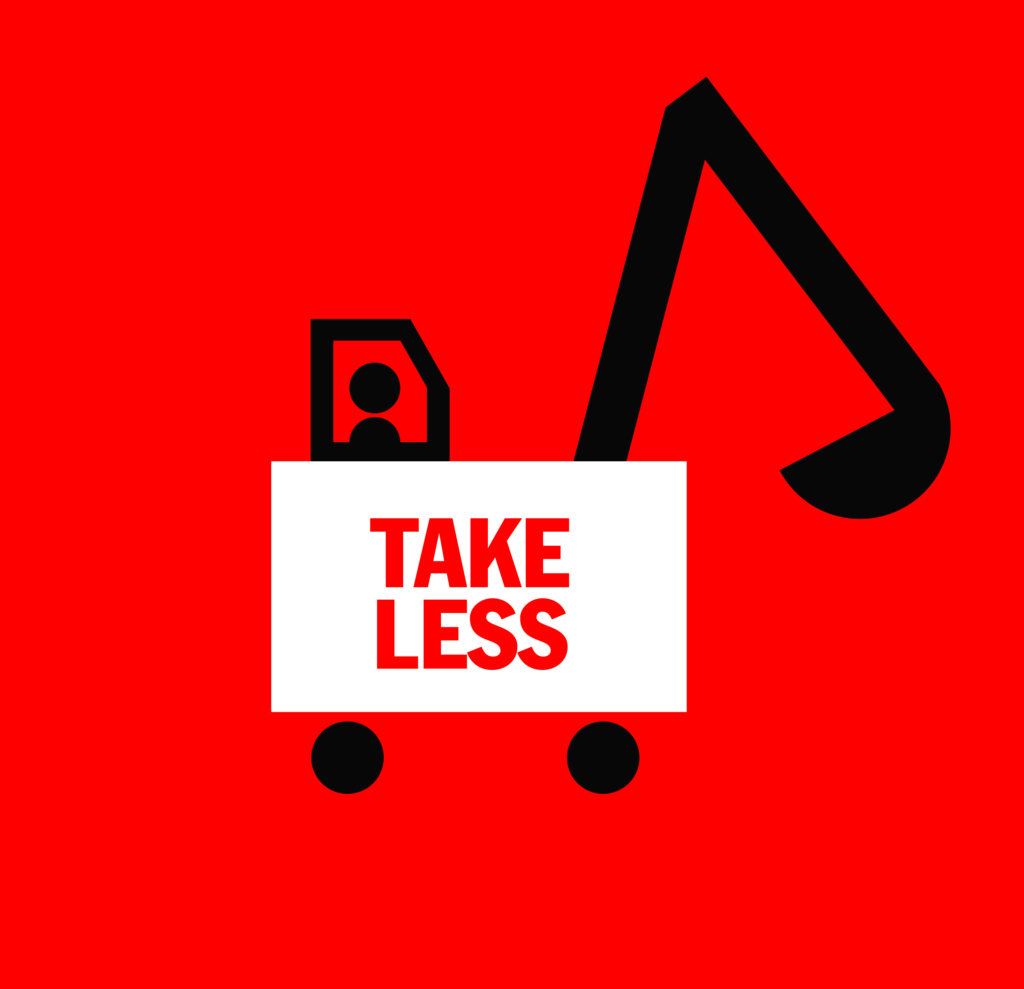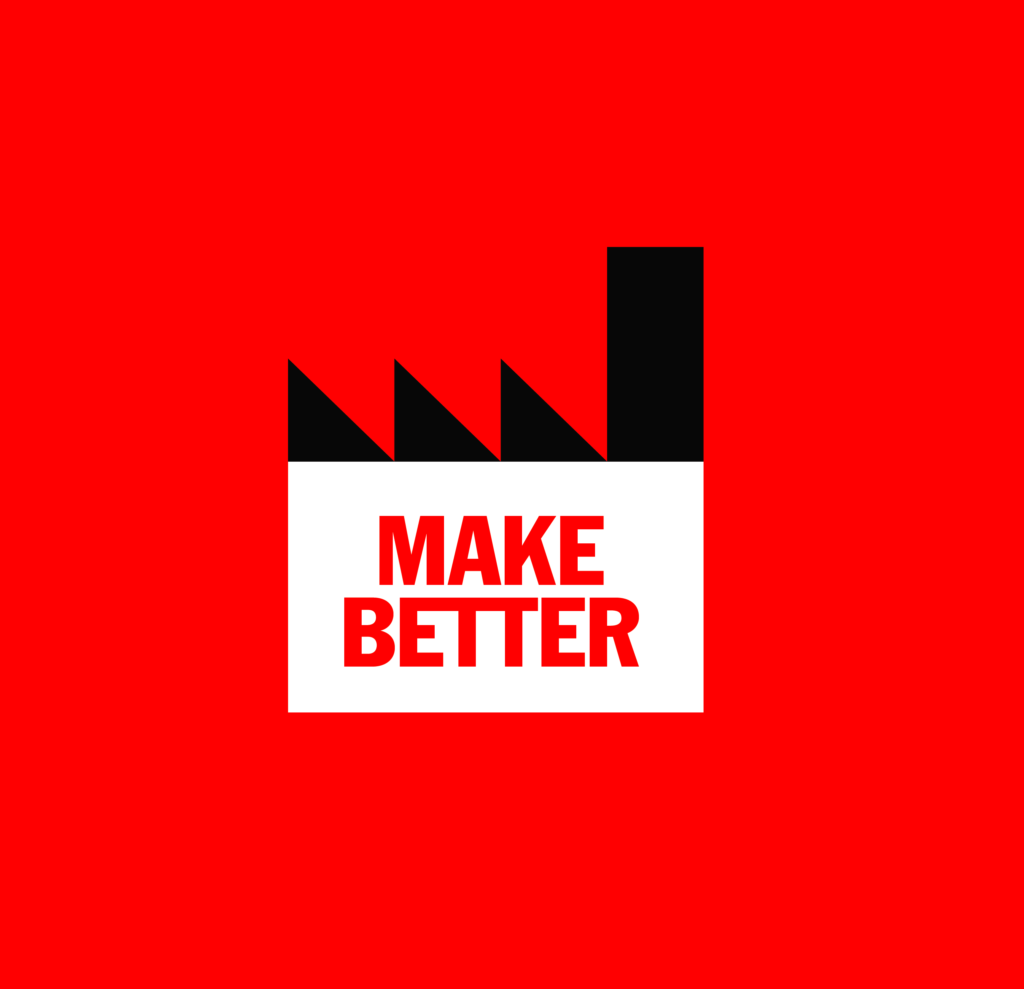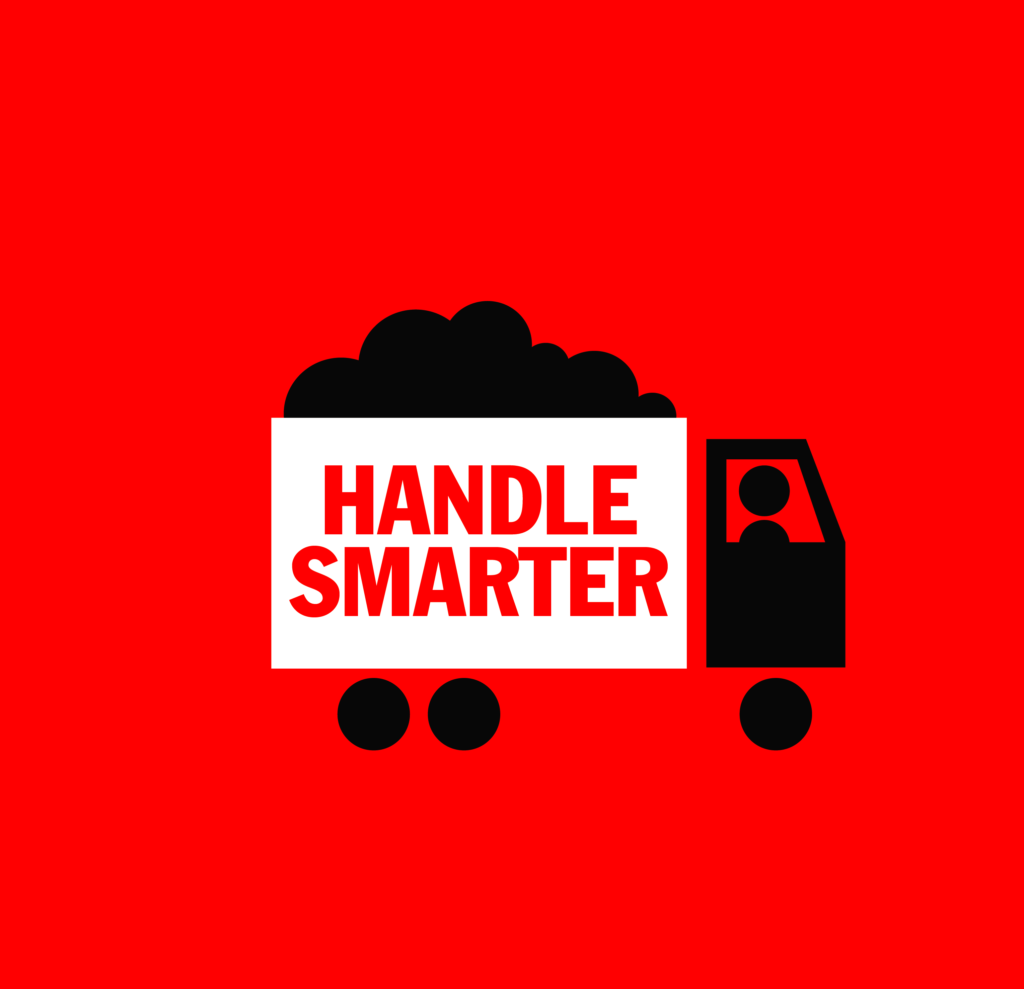
Are you applying to the No Waste Challenge in THE AMSTERDAM METROPOLITAN REGION?
In this brief summary, we dive deeper into local perspectives around waste, and highlight the specific challenges and opportunities facing this region.
Keep reading to learn more about submitting a project to the AMSTERDAM city track.
BEFORE YOU APPLY WE RECOMMEND YOU FIRST READ:
NOMINEES
OF 85 NOMINEES
SEE ALLAMSTERDAM BRIEF
CURRENT SITUATION
AN INTERNATIONAL HUB
As small as it may be, the Netherlands has been a powerful trading nation for centuries. This continues today, with its capital acting as an international hub for creativity, tech and finance. It is called ‘a distribution country’ for a reason: large sums of money are involved in the import and export of goods and e-commerce is booming. But the long chains that characterize this international trading system often results in high amounts of overproduction and waste.
Within this system, multinationals and big corporations seem to have the most control. Because clothing, goods and food are produced on such a large scale, big companies have a cost advantage over small entrepreneurs. This makes it difficult for local designers and producers with more sustainable initiatives to get their foot in the door. Instead, the Netherlands is outsourcing the production of almost everything (except food) in exchange for low costs, resulting in goods and clothing of increasingly poor quality, that quickly end up as waste.

AMSTERDAM CIRCULAR BY 2050
Amsterdam has great circular ambitions. The city council has recently adopted a circular economy policy which aims to halve the use of new raw materials by 2030 and to achieve a fully circular city by 2050. What would this look like? To begin with, a circular city would demand a smarter approach to how raw materials are extracted, transformed into products and then consumed. In its strategy, the City of Amsterdam is focusing its efforts on 3 specific value chains: Food and organic waste streams, consumer goods and sustainable building.
Still, for many people in the Netherlands, sustainability is perceived as something that is expensive and difficult. A sustainable lifestyle only seems to be available to a certain group of people. Therefore it is crucial that accessibility to sustainability is seen as a social as well as an economic issue.

POLICY ON WASTE AND RAW MATERIALS
Amsterdam wants to become a waste-free city with clean streets and squares. The municipality is taking a number of measures to achieve this, including strategies for better waste separation and prevention. To highlight a few:
- Plastic waste: From 2021 Amsterdammers no longer have to separate plastic waste. This will be done mechanically at the city’s waste processing facilities.
- Organic waste: After years of lagging behind, the city is increasing its efforts to collect food and garden waste. It is now looking at implementing different approaches per neighbourhood and in collaboration with residents.
- Textile waste: The municipality is planning to place more containers to collect old clothing and shoes around the city. In addition, the city is looking for ways to collect ‘indoor’ textiles (like working clothes) in collaboration with various parties.
Of course, to achieve a waste-free Amsterdam, governmental measures are not enough. It also requires the active participation of residents: starting with a change in people’s attitudes to waste, so that they see it not as something worthless, but as a valuable resource. Unfortunately, the downside of having such a seamless waste processing system, is that people have no idea how much is being produced. The problem here is that there doesn’t seem to be a problem. How can we make waste more urgent, by making it more visible?

INSIGHTS ON WASTE IN AMSTERDAM


THRIFTY PEOPLE
The Dutch are known to be thrifty people. This means that they want to pay as little as possible for goods, which perpetuates the production, distribution and marketing of cheap products. At the same time, sustainable goods are perceived as expensive (which is true in most cases) and therefore are considered inaccessible to people with a lower income. Dutch consumers also have the dubious honor of being the ones that send the most online purchases back. Here, the fashion industry takes the cake for having the highest number of returns. To make matters worse, the majority of these returned items are usually burned instead of resold.
EFFICIENCY COUNTS
The Dutch agricultural sector is highly mechanised and employs only 2% of the labor force, but provides large surpluses for food-processing. When it comes to food, there is more supply than demand and this results in waste. Efficiency (high speed and low costs) has its own disadvantages, and food surpluses seem to be part of that. Recently, the Covid-19 crisis exposed some of the vulnerabilities of this food system. The pandemic halted the export of Dutch potatoes and veal abroad, causing enormous surpluses to be wasted. This shows that the Dutch system is mainly focused on distributing food abroad. A major challenge for the City of Amsterdam is to distribute food locally in an affordable way, and to entice consumers to buy more local produce.
What can design do in Amsterdam?
So where can designers make a difference? With the help of our partners, we’ve highlighted some key opportunities and case studies relevant for Amsterdam, but there are plenty more! Refer to the global briefs for further inspiration.

This design brief asks: how can we use fewer natural resources and consume more mindfully? Take Amsterdam’s needs into account by considering the following opportunities.
CHOOSING QUALITY OVER PRICE
Dutch culture is economical, sometimes to a fault. How can we design campaigns and programmes that encourage Amsterdammers to choose quality and durability over price? For instance by strengthening the emotional value of products, raising awareness for the concept of ‘true pricing,’ or telling the stories behind cheap goods.
SUSTAINABILITY FOR ALL
Sustainable goods are perceived as expensive, and therefore are often passed over by people with a lower income. Yet, durable goods, and buying less in general, actually fits the frugal nature of the Dutch very well. How can we design products and services to make a sustainable lifestyle accessible and attractive to every Amsterdammer? And by doing so, encourage them to consume less?
BETTER MATCH SUPPLY AND DEMAND
Efficiency (with a focus on high speed and low cost) is the focus in food production, and in other industries such as online fashion. The result is large surpluses that go to waste. How can we design programmes and services to better match supply and demand for food and fashion? And by doing so, help to minimize overproduction?
SHORT FOOD CHAINS
The City of Amsterdam wants to stimulate short food chains that provide a robust sustainable food system. How can we design campaigns and services to persuade Amsterdammers to consume more locally produced food? And how can we encourage more local production and distribution of food?
ONLINE SHOPPING FRENZY
Because we don’t see the consequences of our online shopping behaviour, we almost always underestimate them. How can we create campaigns, interventions and services to minimize the excessive returning behaviour of online shoppers in the Netherlands? And by doing so, prevent the unnecessary transportation and destruction of returned goods?

 GET INSPIRED
GET INSPIRED
LENA
LENA is a fashion library in Amsterdam, which offers its members the possibility to rent clothes, shoes and accessories instead of buying them. Concerned about the polluting fashion industry and how fast fashion creates enormous amounts of waste, the founders hope to offer an alternative to throw-away fashion.

This design brief asks: How can we make products and materials that are kept in use or regenerate natural systems? Take Amsterdam’s needs into account by considering the following opportunities.
DESIGN TO RECYCLE
Most products are not designed with recycling in mind, which makes it hard or even impossible to extract materials that can be used to manufacture new products. This applies to electronic devices, plastics, textiles, furniture and many other consumer goods. How can we design products in a way that makes the recovery and recycling of materials easier?
INGRAIN A CULTURE OF REPAIR
Modern products are not made to be repaired. They are too cheap, too complex or too closed, which makes them hard to disassemble and replace parts. This applies especially to electric and electronic devices, but also to clothing and furniture. How can we design products that are simpler and easier to repair? And how can we design programmes and services that encourage consumers and (small) businesses to take pride in repairing products?
LOCAL PRODUCTION OF TEXTILES
Amsterdam is widely considered as the ‘jeans capital of the world’, with renowned brands like G-Star, Denham, Kuyichi, Mud Jeans and Denim City all based in the city. Combining Amsterdam’s heritage with its circular ambitions, there are many opportunities to redesign the textile chain to become more sustainable. How can we stimulate the local design and production of textiles and clothing? Consider the social aspect too — for example, by retraining people who lost their jobs due to the Covid-19 crisis.
TAKE ON (PLASTIC) PACKAGING
Plastic packaging is harder to ban as it’s interwoven with nearly everything we buy. How can we reduce the use of plastic packaging? For instance by designing programmes and campaigns to make consumers more aware of the impact of plastic packaging. Or by helping brands to take responsibility for their packaging waste. And of course: by designing more sustainable packaging systems to replace the current polluting ones. Also consider forms of unnecessary packaging, like those used in the transportation of goods.
TAKE ON SINGLE-USE PLASTICS
From 3 July 2021 the EU is banning single use plastics such as straws, cutlery, cups and plates. This asks for rapid innovation and a shift in thinking about disposable products. How can we design sustainable or biodegradable alternatives for single-use plastics? And change attitudes towards the use of disposable items all together?

 GET INSPIRED
GET INSPIRED
STONECYCLING
StoneCycling transforms waste into unique building materials. They do so by experimenting with cutting-edge new technologies, creating different types of building materials and systems that can be disassembled at the end of their lifespan. StoneCycling was conceived at the Design Academy in Eindhoven by Tom van Soest. Tom began grinding, crushing, and mixing this waste in his homemade industrial blender. After many, many trials he found a way to create new materials that were both resilient and appealing. By now you can find his WasteBasedBricks® all over the world in the façades, wall cladding and flooring of high-end, sustainable architectural projects.

This design brief asks: How can we use waste as a resource or dispose of goods more responsibly? Take Amsterdam’s needs into account by considering the following opportunities.
COLLECTING PLASTIC WASTE
From 2021, Amsterdammers no longer have to separate their plastic waste at home. Mechanical separation of plastic in the factory, so-called post-separation, now works just as well. This is of course a major innovation, yet it does not prevent plastic litter from ending up in the streets, parks, canals and eventually in the oceans. How can we design programmes and interventions that engage citizens in collecting and processing plastic litter?
COLLECTING TEXTILE WASTE
The municipality is planning to place more containers to collect old clothing and shoes. However, due to the low quality of the disposed textiles, the market for export to developing countries is stagnating. How can we design programmes and services that help separate textiles that need to be shredded from those that can be given a second life?
COLLECTING ORGANIC WASTE
The City of Amsterdam is finally taking action on organic waste, and planning to investigate in which neighbourhoods and in what ways organic waste can be collected separately. This is a significant step, as food and garden waste can be turned into good compost, energy and bio materials. How can we raise awareness for the potential of organic waste? Can we involve residents in the co-design of new ways to collect and process this form of waste?
TAKING ON RESIDUAL WASTE
The City of Amsterdam has outlined a clear policy for collecting and processing different waste streams. However, residual waste – which is normally disposed of in the grey wheelie bin or garbage bag, remains a challenge. This includes, for example: diapers, cat litter and coffee cups. How can we design programmes and services to reduce the amount of residual waste?
TAKING ON BULKY WASTE
Too often, Amsterdammers leave their waste next to their designated underground containers. Not only does this pollute the street, but it also makes it harder to empty the containers. How can we co-design spatial interventions and programmes to give people more ownership of their streets and neighbourhoods so that they dump less waste?

 GET INSPIRED
GET INSPIRED
Plastic Whale
The Plastic Whale Foundation, founded in 2011, strives to keep Amsterdam’s waterways free of plastic. The organisation takes tourists, school children and businesses on plastic fishing trips in boats made from plastic fished out of the city’s famous canals. In turn, the plastic they fish out of the water is used to make new boats and circular furniture. So far the Amsterdam organisation has a fleet of ten boats and now also offers tours in the port city of Rotterdam.
The Plastic Whale Foundation wants to have an international impact and has forged a partnership with SweepSmart in Bangalore, India, which collects and recycles waste to create local jobs with decent pay and conditions and reduce plastic waste at landfill sites.
REFERENCES AND FURTHER RESEARCH
TO LEARN MORE, HERE ARE THE MAIN SOURCES USED FOR CREATING THIS BRIEFING
-
Policy and ambitions of the City of Amsterdam
- Circulair strategy of the City of Amsterdam.
- Concept uitvoeringsprogramma afval en grondstoffen City of Amsterdam
-
Food productions in The Netherlands
- Article Naar een kringlooplandbouw in Groene Amsterdammer about Dutch food industry.
- Podcast Het Voedsel Kabinet about food in The Netherlands
-
Returning online purchases
- VPRO Tegenlicht about what happens when products are returned after online shopping: Op volle retouren.
-
Fast Fashion in The Netherlands
- Fast Fashion Onderzoek commissioned by Het Ministerie van Infrastructuur en Waterstaat.
-
Dutch plastic waste
- Article Plasticafval: hoe een Nederlands dropzakje kon eindigen in een Turkse berm in NRC about how plastic waste from The Netherlands ends up in Turkey
Amsterdam selection committee

Salomé Galjaard is an industrial design engineer – turned civil servant – with over a decade of experience in the built environment. She has worked on product and lighting design projects, digital fabrication technologies, integrated urban development and the role of the engineer in the transition to the circular economy. The red threat in many of these projects is ‘systemic change’. In 2019 she started working for the city of Amsterdam as deputy program manager Circular Economy.

Tjeerd Veenhoven develops and designs sustainable materials and products from organic residual flows for applications in and around various sectors such as interior, apparel and building. Through self-initiated and commissioned projects Tjeerd has acquired extensive knowledge about cellulose, chitin, starch and mycelium. Over the past 20 years Tjeerd has collaborated with many leading brands in making more sustainable consumption possible. Projects such as Palmleather and AlgaeFabrics have been awarded over the years for their pioneering quality. Foremost Studio Tjeerd Veenhoven is a design studio, using design as a driving force to speed up sustainable transitions.

Mirjam de Bruijn is a multidisciplinary designer who believes that good design can play an essential role in tackling climate change. It has the power to seduce people to make the right (impactful) decisions. In 2017 Ilse Kwaaitaal and Mirjam de Bruijn won the WDCD award with the idea of “Twenty”, a shampoo capsule that turns into a liquid shampoo by adding water in a reusable bottle. By developing this, they hope to create a more sustainable shampoo that reduces transportation emissions and plastic waste.

Sarriel Taus has a degree in economics and started his entrepreneurial life after a very short corporate career at KNP Telecom. After Mtel, his first venture, he started Fifteen Amsterdam with Jamie Oliver in 2004. More than 200 youngsters became chefs and front of house employees in restaurants. Nowadays he helps food startups in the World of Food in de Bijlmer in Amsterdam. Since 2019 he is co-partner of design label Droog and inspirational hub @droog.

Paula Rijkens is the Innovation Lead Circular Agrifood at Foodvalley since summer 2020; a great job to make the agrifood supply chain more circular and sustainable. She has long experience for both companies in food business (Frieslandcampina, Sonneveld), educational institutes (HAS Hogeschool) and government (Province of Brabant).
Passion for working on the cutting edge of food, feed and agro accelerated by technology.
Actual topics Paula is involved in: create value to major waste and losses flows + making the insects market accelerate for both feed and food!

Constance Steenkamp-Faaij, after various (management) positions in welfare work and at the municipality of Amsterdam, is now programme manager of Amsterdam Plastic Smart City. Amsterdam wants to be a plastic (litter) free city by 2030, thus contributing to the world – on which we can spend some time – being used in an ecologically responsible way by and for people and animals for many generations to come.

Maru Asmellash has, together with partners Rizky Lasahido (27) and Eben Badu (26), the platform The New Originals, with the aim of encouraging talent. He is also director of Kazerne Reigersbos, a cultural center in Amsterdam Southeast. He likes to interweave his initiatives, which led to, among other things, an enormous chess set on the floor of the Amsterdam University of Applied Sciences and the programming of the Amsterdam Museum Night.

Nina Stegeman works as a design researcher at STBY in Amsterdam. She was one of the lead researchers for the No Waste Challenge, both for the global research and the Amsterdam research. For Nina, it is the responsibility of the researcher to show that complex issues such as waste, the linear economy and climate change are interconnected, layered, and entangled. STBY is WDCD’s research partner.

Remco Wagemakers is co-founder of Bureau 8080 and Oscar Circular. He combines a mission-driven and pragmatic entrepreneurial spirit with very broad knowledge of the entire waste and raw materials chain; from European, national and local legislation and regulations to process supervision of tenders, and from joint sustainable procurement management to collective waste collection.

Paul Verschuren works at the municipality of Amsterdam. In the past as a policy officer, department manager and strategic advisor, now as programme secretary of Amsterdam Plastic Smart City. A programme with an important mission: we will realise a city without plastic pollution in 2030!
“Together” is the main focus. Every local action counts: clean-up actions, high-tech solutions, education, you name it. So that Amsterdam becomes an even more beautiful and healthy city.

Thomas van der Lee is the Relations Liaison at Foodvalley NL since early 2020. For several years, he has been involved in supporting entrepreneurs and companies with practical, refreshing ideas to make the world cleaner and more sustainable. Reducing and preventing waste is therefore important to him personally, but also to Foodvalley NL as a whole. Garbage and waste start with bad design, so he is very curious to learn about the ideas and designs that participants have to tackle this challenge!

Tom van Soest is a WasteBased designer. His goal is to upcycle as many secondary residual materials as possible into high-quality circular (building) materials. One of the first products to achieve this successfully was the WasteBasedBrick®; a brick consisting of at least 60% waste. The WasteBasedBrick has been further developed at StoneCycling, where he and a team of ambitious upcyclers are trying to make the world not only cleaner, but also more beautiful. Since 2011, the WasteBasedBrick has already upcycled 550,773 kg of waste into circular building materials, divided between small and large projects worldwide.

Dagan Cohen is the head of R&D at What Design Can Do. He is involved in all research, impact measurement and development programs. During his long-term involvement with WDCD Dagan has spearheaded challenge programs. Dagan’s passion in participative culture has proved invaluable to their success. After graduating from Rietveld Academy, Dagan worked as a visual artist, entrepreneur, and has built 15 years experience working as (digital) creative director at agencies from Saatchi & Saatchi to Draftfcb. Dagan is serving the Amsterdam selection committee to represent What Design Can Do.














